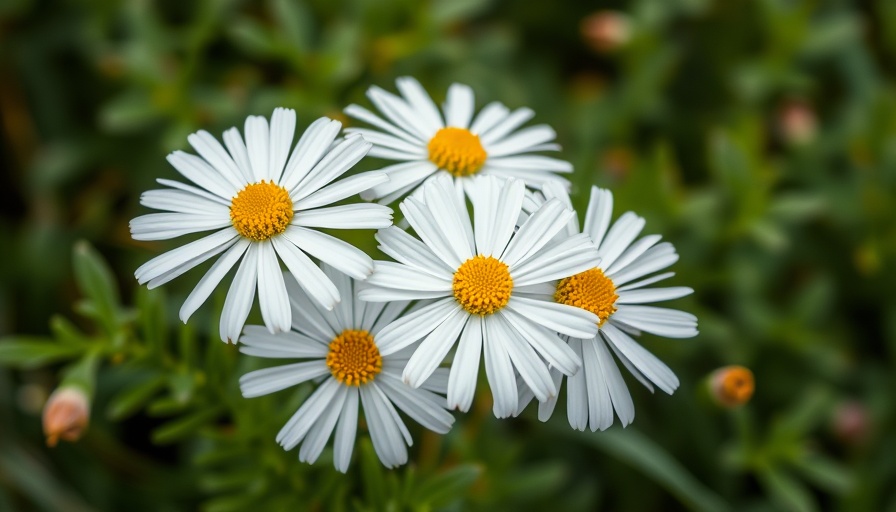
Discovering the Beauty of the Heath Aster
The heath aster, known scientifically as Symphyotrichum ericoides, is a perennial flower that blooms from late summer to fall, captivating garden enthusiasts with its dainty white flowers. Native to the central and eastern regions of the United States and Canada, this hardy flower thrives in USDA Hardiness Zones 3 to 10, making it an excellent choice for a variety of gardening climates. Apart from their charming appearance, heath asters are also resilient plants that require moderate care, appealing to both novice and experienced gardeners.
Essential Gardening Tips for Heath Asters
If you're looking to cultivate these lovely flowers, it's essential to select the right location and soil type. Heath asters prefer full sun and well-draining soil, ideally with a pH between 5.1 and 6.8. Space them 12-18 inches apart to allow ample room for growth, and ensure they have access to moderate watering. Consider adding organic mulch to retain soil moisture while suppressing weeds. This strategy not only supports the aster's growth but also enriches the soil over time.
Choosing the Right Cultivars
While the traditional white varieties of heath asters are certainly popular, this flower species also boasts various cultivars that add a splash of color to any garden. Options such as 'Blue Star' and 'Pink Cloud' provide visual interest, allowing you to design a flower garden rich in diversity. Selecting a mix of these cultivars can create a stunning effect, attracting beneficial pollinators like bees and butterflies to your garden space.
Maintenance Best Practices
Regular maintenance is crucial for ensuring your heath asters remain healthy and vibrant. Although they are relatively low-maintenance, you should monitor for garden pests and diseases. Common pests include aphids and spider mites, which can weaken your plants. Implementing natural pest control methods such as introducing ladybugs or using organic insecticidal soap can effectively mitigate these concerns without harming the environment.
Propagation and Growth Strategies
Heath asters can be propagated through various means—by seed, division, or cuttings. If you're starting from seed, plant them at a depth of 1/8 inch in well-prepared soil. For those who prefer transplants, ensure you position the root ball at the proper depth. Dividing established plants in early spring or fall can also promote vigorous growth and prevent overcrowding in your flower bed.
Planting in the Landscape
Not only do heath asters make fantastic garden flowers, but they also enhance landscaping designs. Their ability to flourish in natural settings makes them suitable for rock gardens, borders, and wildflower meadows. They pair beautifully with other late-blooming perennials like goldenrod and ironweed, creating stunning displays of color and texture.
Conclusion and Call to Action
Now that you're equipped with the knowledge of how to grow and care for heath asters, it’s time to bring these charming plants into your own garden. Whether you choose to create a vibrant flower garden or a simple border, heath asters are sure to provide enduring beauty. Explore your local garden center for seeds or plants, and enjoy the rewards of your gardening efforts, from attracting pollinators to enjoying the blooms well into the fall.
 Add Row
Add Row  Add
Add 




Write A Comment